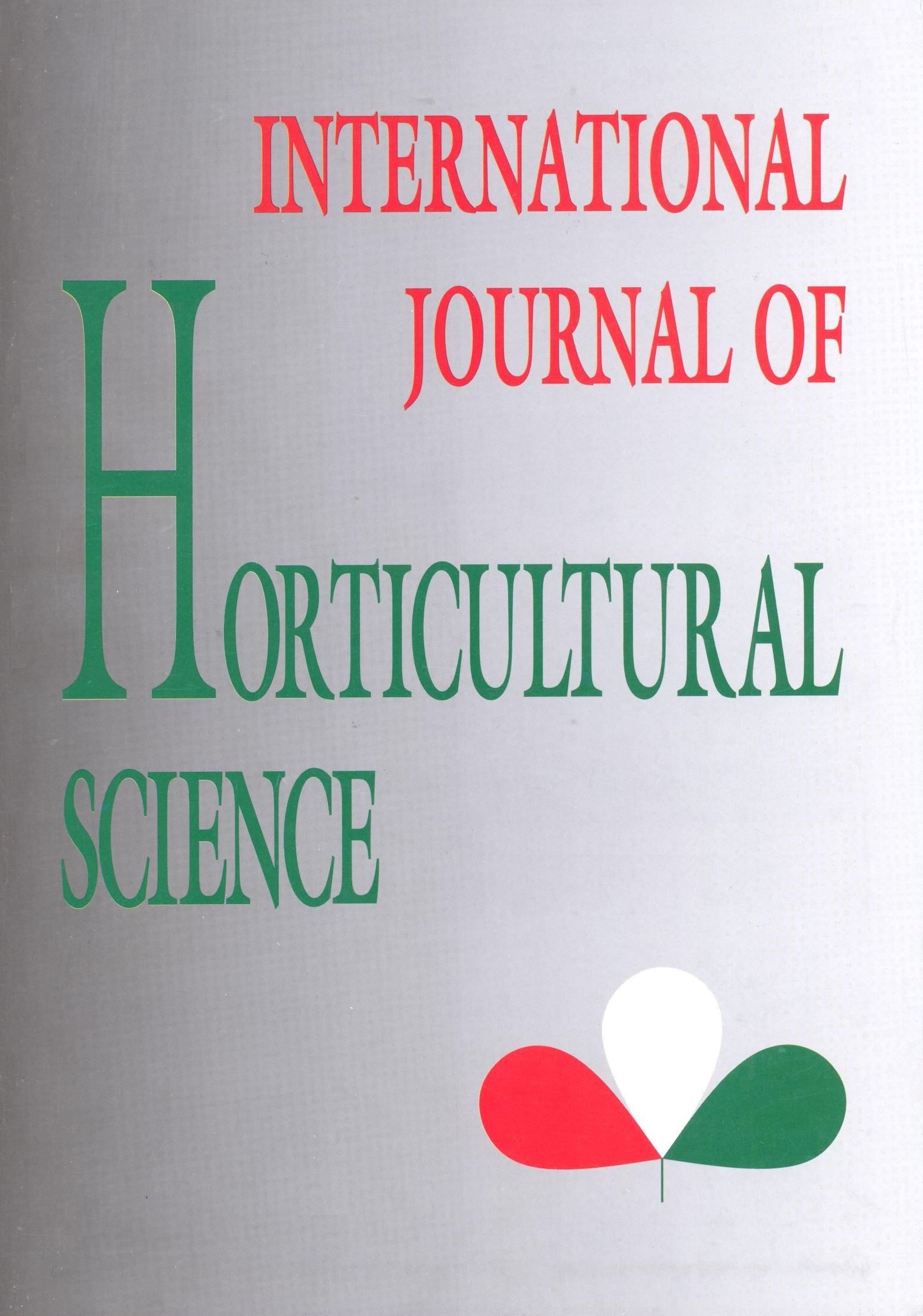Rheological evaluation of industrial tomato in raw and processed condition
Authors
View
Keywords
License
Copyright (c) 2020 International Journal of Horticultural Science
This is an open access article distributed under the terms of the Creative Commons Attribution License (CC BY 4.0), which permits unrestricted use, distribution, and reproduction in any medium, provided the original author and source are credited.
How To Cite
Abstract
Tomato (Lycopersicon esculentum Mill.) is the second most important vegetable with one of the biggest producing areas worldwide, and an increasing tendency in Hungary as well. To fulfil the growing demands of the industry the producers must use the most suitable genotypes for the given conditions. In the experiment six genotypes (‘Heinz 1015 F1‘,‘Heinz 9478 F1‘,‘Kecskeméti 407‘,‘NUN254 F1‘,‘Prestomech F1‘ and ‘Rustico F1‘) were evaluated for different quality parameters: fruit shape index (length/diameter), firmness (g cm-2), force needed to tear the skin (kg-1) and consistency of tomato puree (g*sec). According to the results, the ‘Heinz 1015 F1‘ and ‘Heinz 9478 F1‘ were the most suitable genotypes for industrial processing in the mean of fruit quality. Strong positive correlation between consistency of juice and fruit shape index (r=0.891) and firmness of berry (r=0.882) was confirmed. The results have proved the necessity of these quality parameter measurements, which are important for the evaluation of raw material.
References
- Barrett, D. M., Garcia, E., Wayne, J. E. (1998): Textural modification of processing tomatoes. Critical Reviews in Food Science and Nutrition. 38(3): 173–258. https://doi.org/10.1080/10408699891274192
- Beckles, D. M. (2012): Factors affecting the postharvest soluble solids and sugar content of tomato (Solanum lycopersicum L.) fruit. Postharvest Biology and Technology. 63(1): 129–140. https://doi.org/10.1016/j.postharvbio. 2011.05.016
- Bőcs, A., Pék, Z., Helyes, L. (2011): Simultaneous impact of the different water supply and year type on processing tomato yield. International Journal of Horticultural Science. 17(1-2): 79–81. https://doi.org/10.31421/IJHS/17/1-2./950
- Brummell, D. A. (2006): Cell wall disassembly in ripening fruit. Functional Plant Biology. 33(2): 103–119. https://doi.org/10.1071/FP05234
- Cuartero, J., Gragera, J., Ruiz, A. (1996): Relación entre los contenidos en sólidos solubles (grados Brix) y azúcares solubles en tomate de industria y lıneas silvestres. Agrıcola Vergel. 15(175): 436–440.
- Desmet, M., Lammertyn, J., Verlinden, B. E., Nicolai, B. M., (2002): Mechanical properties of tomatoes as related to puncture injury susceptibility. Journal of texture studies. 33(5): 415–429. https://doi.org/10.1111/j.1745-4603.2002.tb01357.x
- Devaux, M. F., Barakat, A., Robert, P., Bouchet, B., Guillon, F., Navez, B., Lahaye, M. (2005): Mechanical breakdown and cell wall structure of mealy tomato pericarp tissue. Postharvest Biology and Technology. 37(3): 209–221. https://doi.org/10.1016/j.postharvbio.2005.04.013
- Frenkel, C., Jen, J. J. (1989): Tomatoes. In: Quality and preservation of vegetables. (Ed. Eskin, N. A. M.) CRC Press. Florida. 32–47.
- Geeson, J. D., Browne, K. M., Maddison, K., Shepherd, J., Guaraldi, F. (1985): Modified atmosphere packaging to extend the shelf life of tomatoes. International Journal of Food Science & Technology. 20(3): 339–349. https://doi.org/10.1111/j.1365-2621.1985.tb00384.x
- Helyes, L., Dimény, J., Pék, Z., Lugasi, A. (2006): Effect of the variety and growing methods as well as cultivation conditions on ingredient of tomato (Lycopersicon lycopersicum (L.) Karsten) fruit. Acta Horticulturae. 712: 511–516. https://doi.org/10.17660/ActaHortic.2006.712.62
- Jackman, R. L., Stanley, D. W. (1995): Perspectives in the textural evaluation of plant foods. Trends in Food Science & Technology. 6(6): 187–194. https://doi.org/10.1016/S0924-2244(00)89053-6
- Karklelienė, R., Dambrauskienė, E., Juškevičienė, D., Radzevičius, A., Rubinskienė, M., & Viškelis, P. (2014): Productivity and nutritional value of dill and parsley. Horticultural Science. 41(3): 131–137. https://doi.org/10.17221/240/2013-HORTSCI
- Kılıçkan, A., Güner, M. (2008): Physical properties and mechanical behavior of olive fruits (Olea europaea L.) under compression loading. Journal of Food Engineering. 87(2): 222–228. https://doi.org/10.1016/j.jfoodeng.2007.11.028
- Li, Z., Liu, J., Li, P., Yin, J. (2009): Study on the collision-mechanical properties of tomatoes gripped by harvesting robot fingers. African Journal of Biotechnology. 8(24): 7000–7007.
- Li, Z., Li, P., Liu, J. (2010a): Effect of tomato internal structure on its mechanical properties and degree of mechanical damage. African Journal of Biotechnology. 9(12): 1816–1826. https://doi.org/10.5897/AJB2010.000-3020
- Li, Z., Liu, J., Li, P. (2010b): Relationship between mechanical property and damage of tomato during robot harvesting. Transactions of the Chinese Society of Agricultural Engineering. 26(5): 112–116.
- Li, Z., Li, P., Liu, J. (2011): Physical and mechanical properties of tomato fruits as related to robot’s harvesting. Journal of Food Engineering 103(2): 170–178. https://doi.org/10.1016/j.jfoodeng.2010.10.013
- Van Linden, V., De Ketelaere, B., Desmet, M., De Baerdemaeker, J. (2006): Determination of bruise susceptibility of tomato fruit by means of an instrumented pendulum. Postharvest Biology and Technology. 40(1): 7–14. https://doi.org/10.1016/j.postharvbio.2005.12.008
- Nindo, C. I., Tang, J., Powers, J. R., Takhar, P. S. (2007): Rheological properties of blueberry puree for processing applications. LWT-Food Science and Technology. 40(2): 292–299. https://doi.org/10.1016/j.lwt.2005.10.003
- Nuez, F. (1995): El cultivo del tomate. Mundi-Prensa. Madrid, España. pp. 793.
- Požrl, T., Žnidarčič, D., Kopjar, M., Hribar, J., Simčič, M. (2010): Change of textural properties of tomatoes due to storage and storage temperatures. Journal of Food Agriculture and Environment. 8(2): 292–296.
- Ruiz, M., Rodriguez, A. (1983): Variedades de tomate para la recolección mecánica; Ensayos de campo y de laboratorio. In: I. Congreso Nacional de Ciencias Hortıcolas. Valencia, Spain. pp. 789–799.
- Siddiqui, M. W. (Ed.). (2015): Postharvest biology and technology of horticultural crops: principles and practices for quality maintenance. CRC Press. USA. pp. 572.
- Tijskens, L. M. M., Evelo, R. G. (1994): Modelling colour of tomatoes during postharvest storage. Postharvest Biology and Technology. 4(1-2): 85–98. https://doi.org/10.1016/0925-5214(94)90010-8
- Toivonen, P. M. A., Brummell, D. A. (2008): Biochemical bases of appearance and texture changes in fresh-cut fruit and vegetables. Postharvest Biology and Technology. 48(1): 1–14.
- https://doi.org/10.1016/j.postharvbio.2007.09.004
- Waldron, K. W., Parker, M. L., Smith, A. C. (2003): Plant cell walls and food quality. Comprehensive reviews in food science and food safety. 2(4): 128–146. https://doi.org/10.1111/j.1541-4337.2003.tb00019.x
- Van Zeebroeck, M., Van Linden, V., Darius, P., De Ketelaere, B., Ramon, H., Tijskens, E. (2007): The effect of fruit properties on the bruise susceptibility of tomatoes. Postharvest Biology and Technology. 45(2): 168–175. https://doi.org/10.1016/j.postharvbio.2006.12.022

 https://doi.org/10.31421/IJHS/26/2020/7922
https://doi.org/10.31421/IJHS/26/2020/7922










